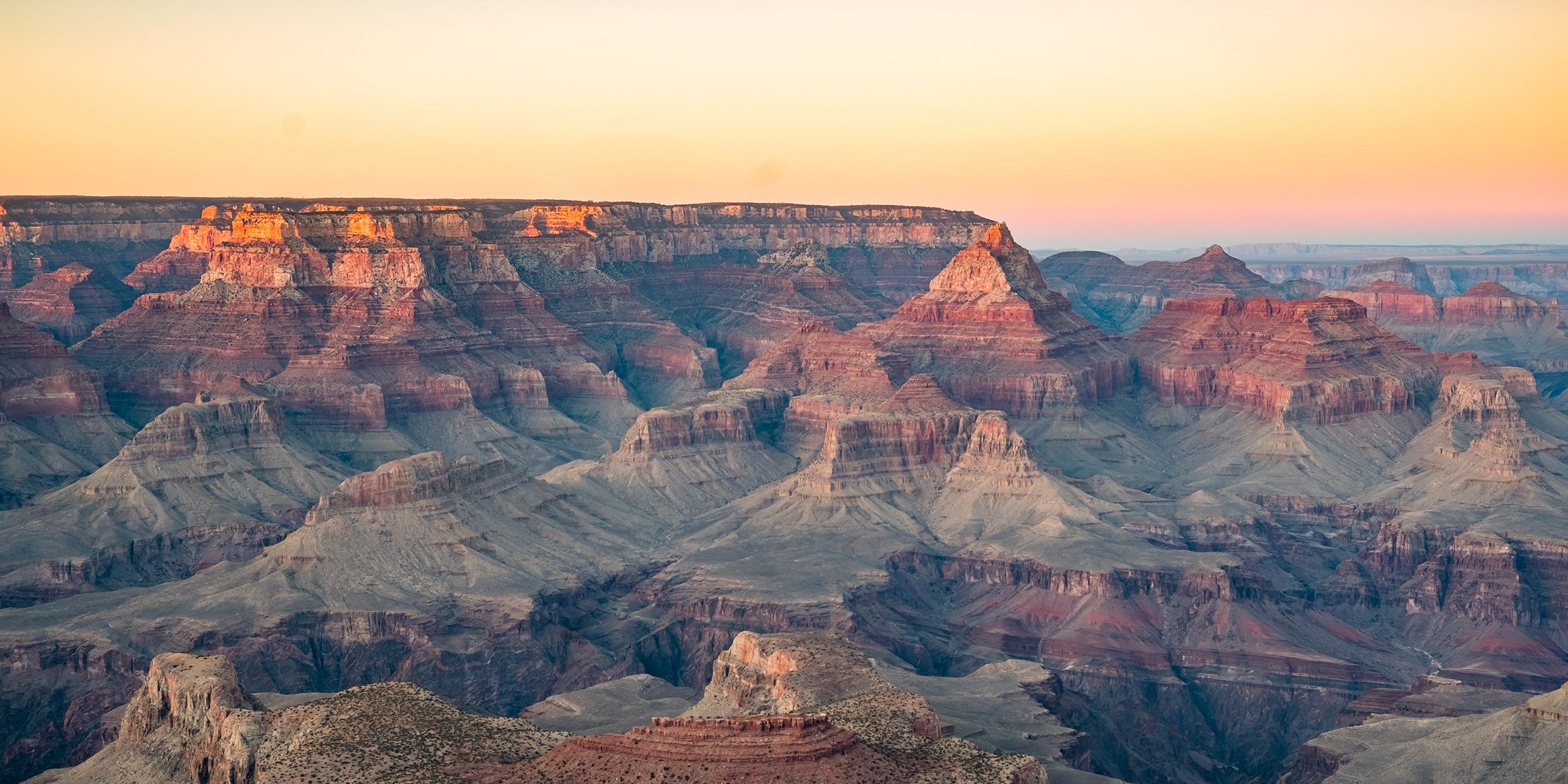Originally published 3 April 1995
Natural and artificial are increasingly difficult to distinguish.
We have synthetic food, synthetic fibers — even genetically engineered mice and tomatoes. The closest many of us get to nature is a barefoot romp on Astroturf.
We level mountains, fill bays, obliterate forests, speckle the heavens with mechanical stars.
Nothing, apparently, is beyond our powers of artifice.
Nevertheless, I was unprepared for this passage from historian David Nye’s new book, American Technological Sublime.
He writes: “The characteristic questions about the Grand Canyon reported by Park Service employees assume that humans dug the canyon or that they could improve it so that it might be viewed quickly and easily. Rangers report repeated queries for directions to the road, the elevator, the train, the bus, or the trolley to the bottom. Other visitors request that the canyon be lighted at night. Many assume that the canyon was produced by one of the New Deal dam-building programs, or by the Indians — ‘What tools did they use?’ is a common question.”
Inspired by Nye’s report — and in the spirit of early April — I offer the following guide to some of America’s spectacular technological achievements.
Niagara Falls. The falls had its origin in the most colossal engineering blunder of all time.
In the early 1950s, the United States and Canada agreed to improve the St. Lawrence Seaway with a system of monumental canals, locks and waterways providing passage for large vessels from the upper Great Lakes to the Atlantic.
From the beginning, the project was hampered by wrangling between American and Canadian engineers. At last, in the Treaty of Moose Jaw, 1953, a compromise was reached: The Canadians would begin construction of the waterway at Lake Superior and work seaward; the Americans would begin in the Gulf of Saint Lawrence and work inland.
Common specifications were agreed upon and construction commenced. All went smoothly, and the St. Lawrence Seaway Project was offered as an example of felicitous international collaboration. Even the frequently-squabbling French and English were inspired by American-Canadian cooperation to finish digging the long-dreamed-of English Channel.
Only when the two construction teams met between Lakes Erie and Ontario did the blunder become apparent. The Americans had interpreted all plan dimensions in feet; the Canadians, of course, had worked in meters. The result was a 326-foot discrepancy between the levels of the American and Canadian canals.
Each side blamed the other for the error.
Today, water pours over that fractious precipice, to the delight of tourists.
Old Faithful. South Dakotans have always been embarrassed by the dreary flatness of their state. For generations they were reduced to selling tacky gimcracks to tourists passing through on their way to the majestic mountains of Wyoming. A lump of granite named Mt. Rushmore was the best South Dakotans could offer in competition.
Then they had the brilliant idea of carving into Mt. Rushmore the granite likenesses of American presidents. The tourists lingered and spent money that previously had stayed in their pockets until they reached Wyoming.
Not to be outdone, Wyomingites contrived a tourist attraction of their own, a stupendous geyser near a popular Yellowstone Park hotel.
A visit to the underground geyser works is not to be missed. Gleaming steel boilers are heated by geothermal energy from the ground until sufficient pressure builds up, trips a release valve, and nozzles a stream of water high into the air.
Unfortunately, the average recharge time for the naturally-heated boilers is 65 minutes, whereas it takes only 27 minutes to park, unload and re-load a tourist bus. Modifications are under way to convert the geyser works from geothermal to electrical heat, perhaps not as faithful, but certainly faster.
Mississippi River. It seems impossible to believe that just 60 years ago vast tracts of the central United States were a dust bowl. Farmers were forced to pack their Model‑T Fords with their worldly goods and head west to the lusher valleys of California.
Franklin Delano Roosevelt changed this forever.
In 1934, at the height of the Great Depression, he established the Heartland America Hydro Authority to irrigate the parched midlands and create jobs. The Army Corps of Engineers was charged with diverting northern rivers southward.
Like most New Deal enterprises, the irrigation project grew like Topsy. More and more water was channeled south until a vast new river bisected the nation. The project came to an end only when the citizens of New Orleans refused to surrender any more land to the wide channel the engineers had driven through the heart of their city.
A proposal to call the waterway the Roosevelt River foundered in the recalcitrant Congress of 1940. Instead, it was named the Mississippi, after the fictional waterway of Mark Twain’s novels.
It is curious that the new Republican agenda, which seeks to undo so much New Deal legislation, makes no mention of restoring the Mississippi Valley to its former unwatered state.



